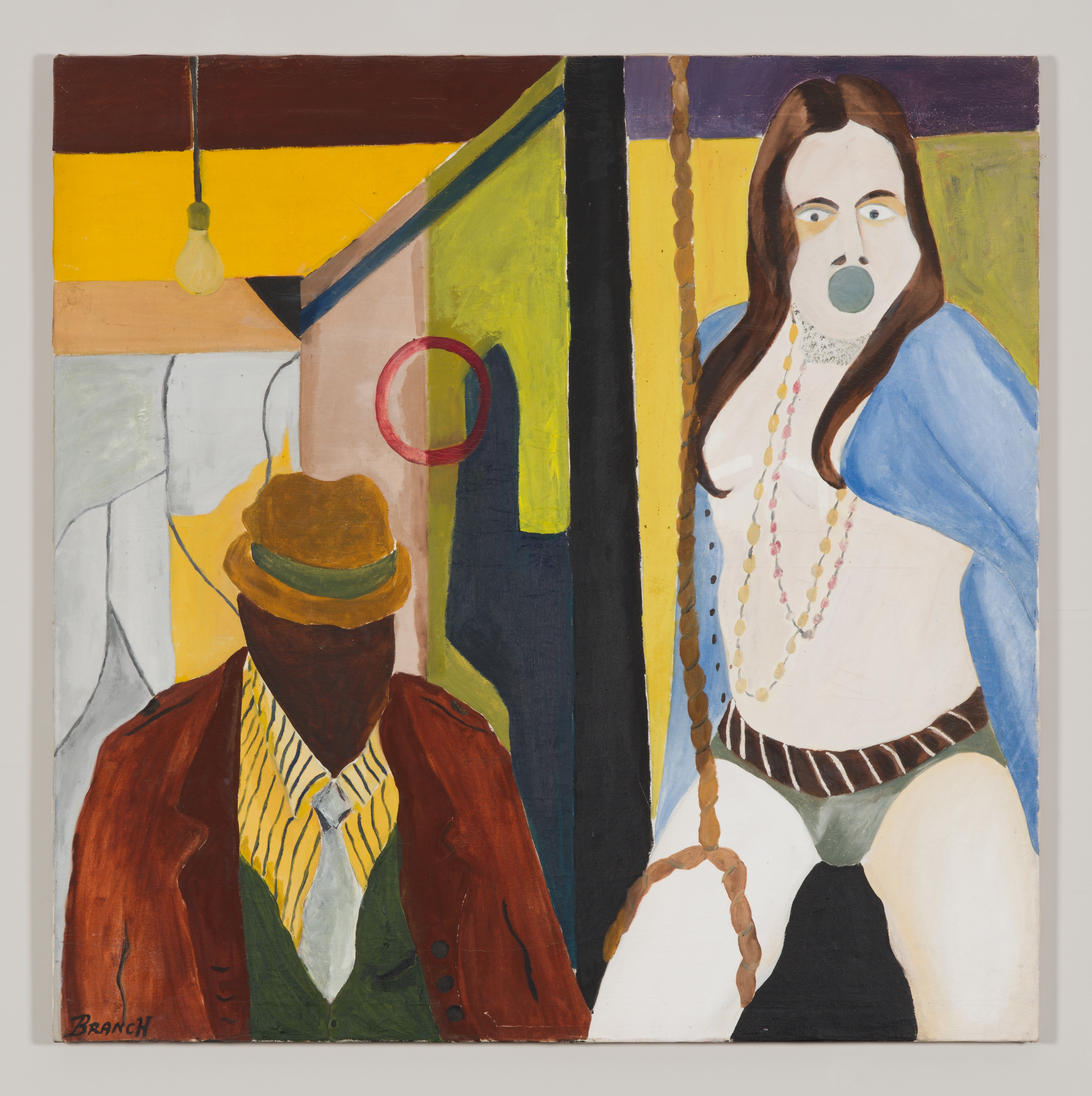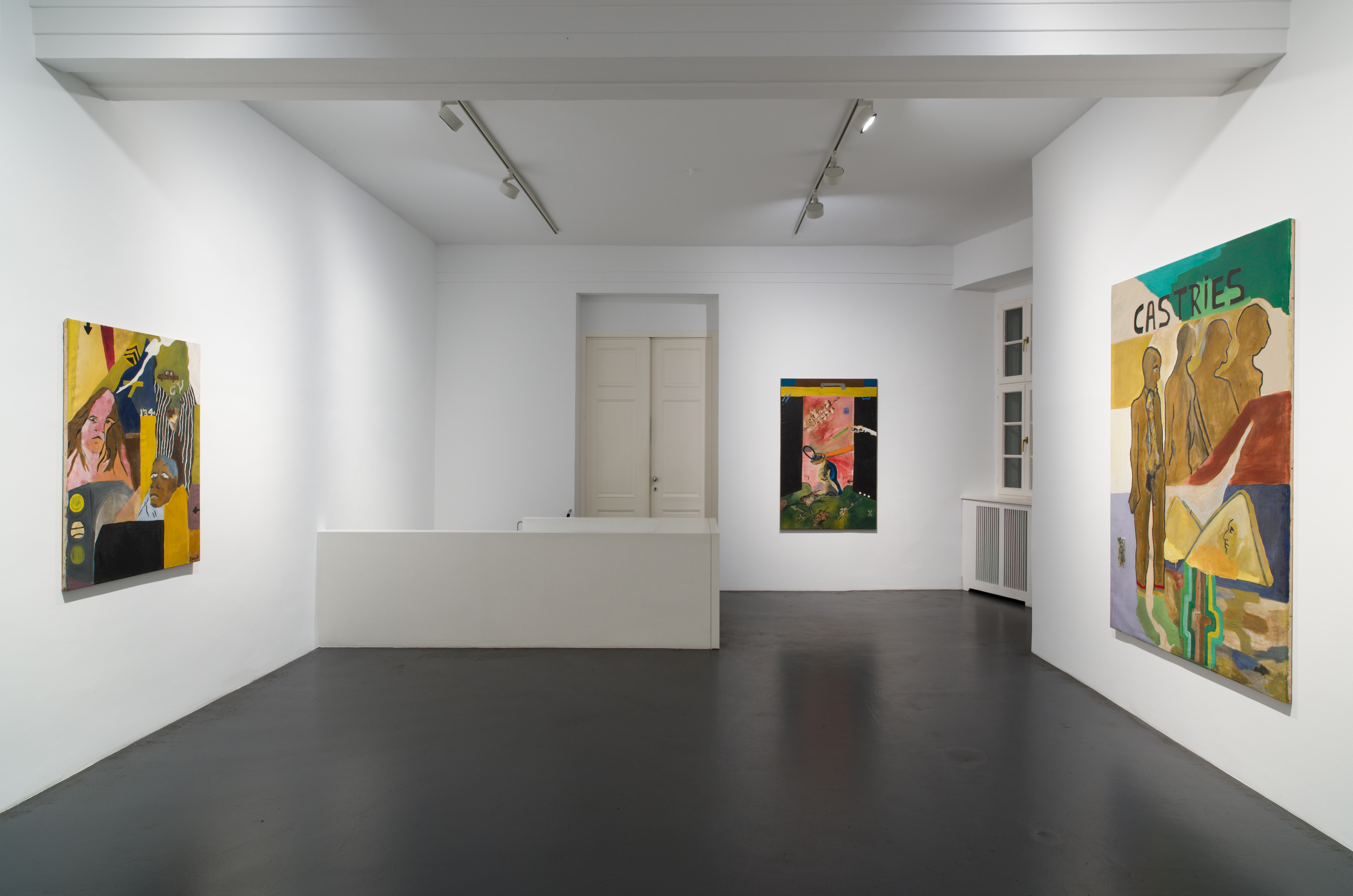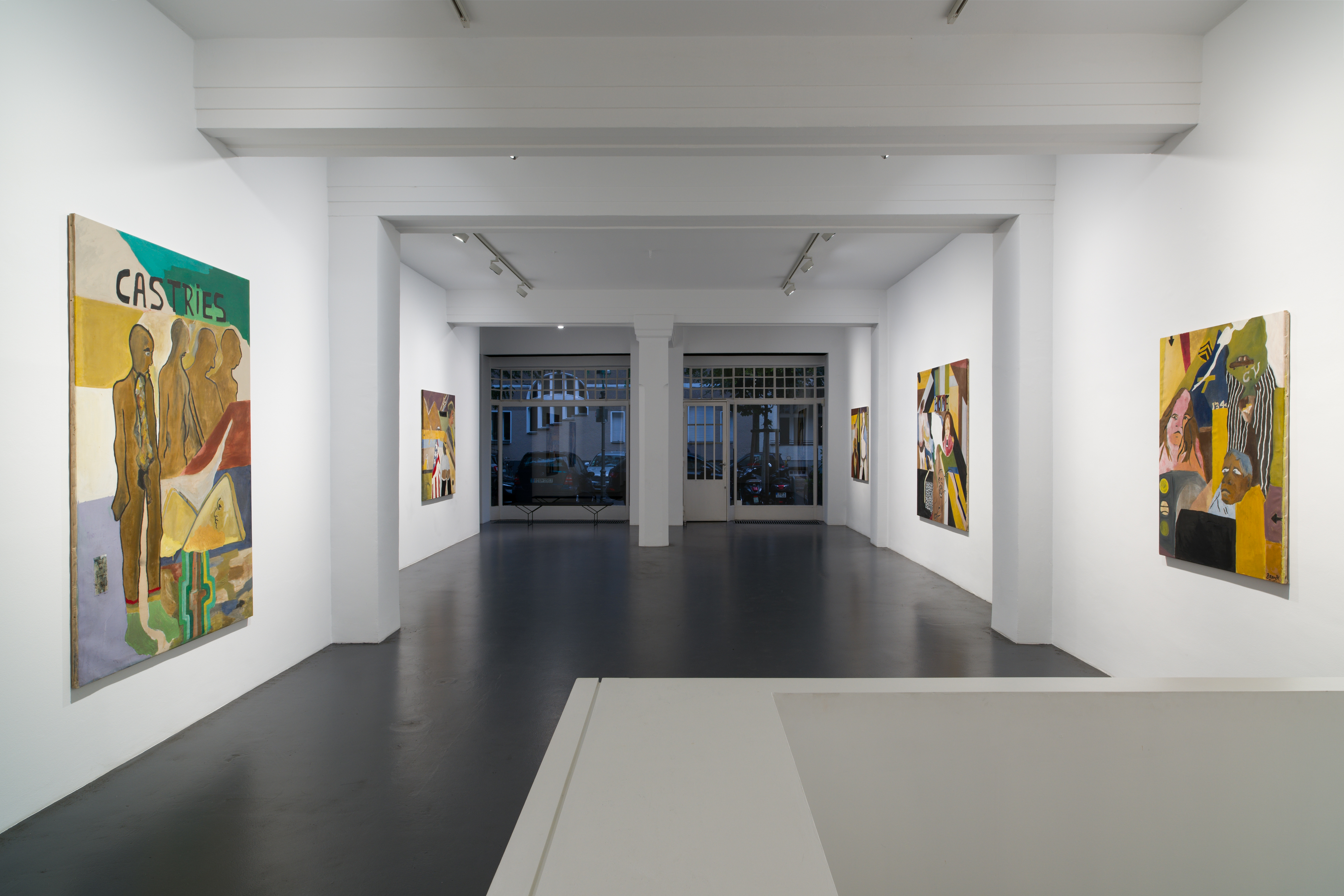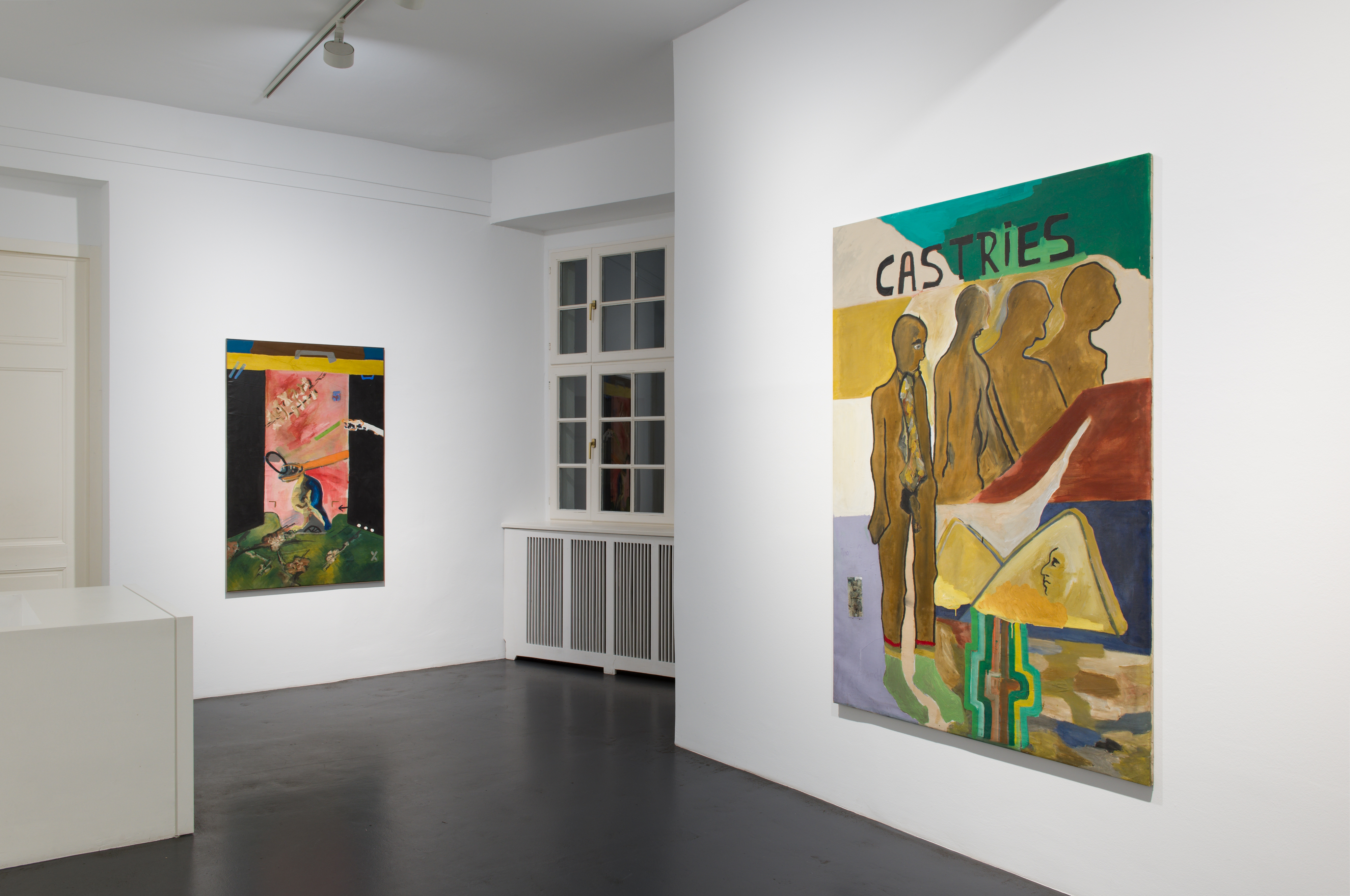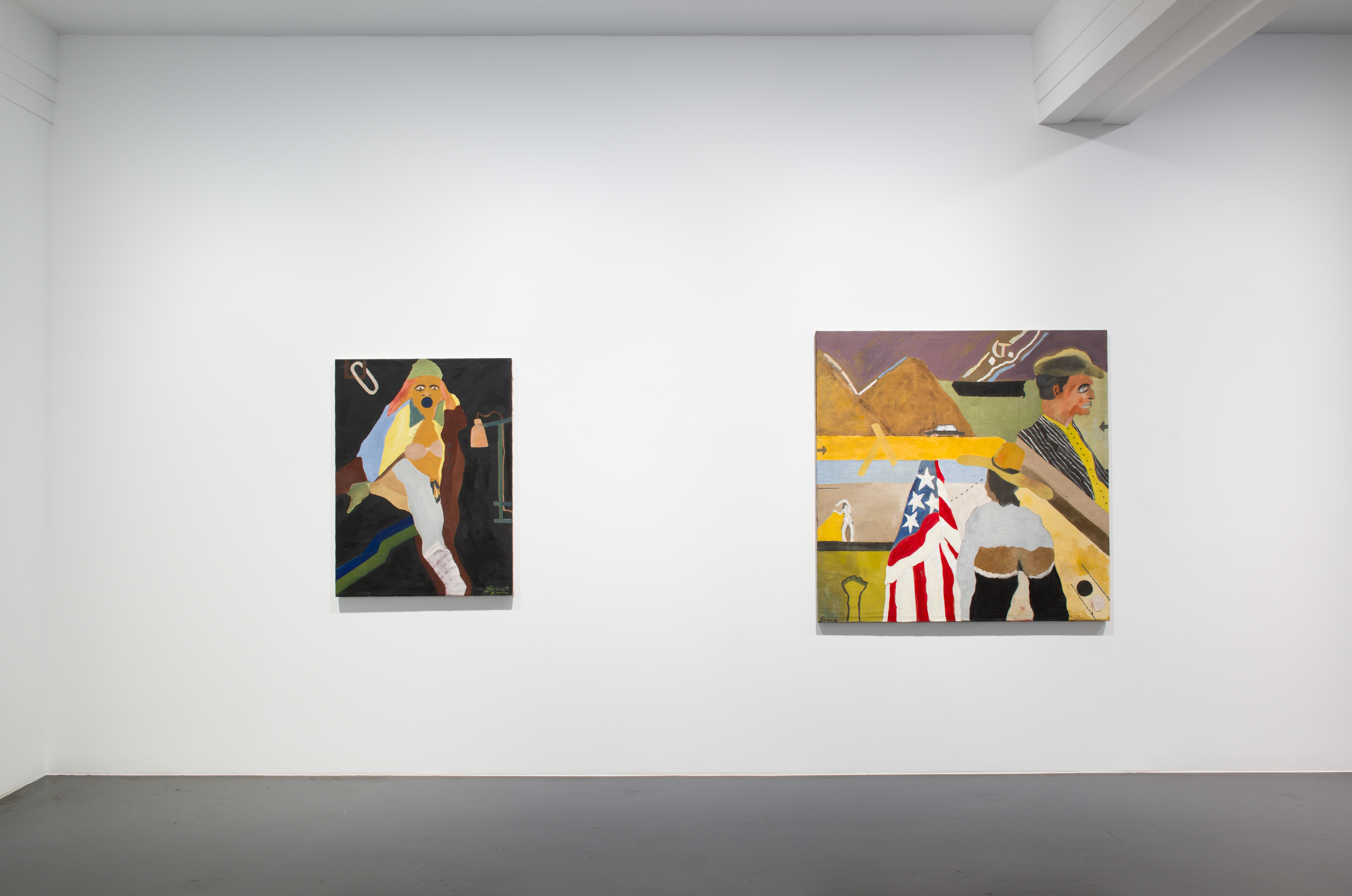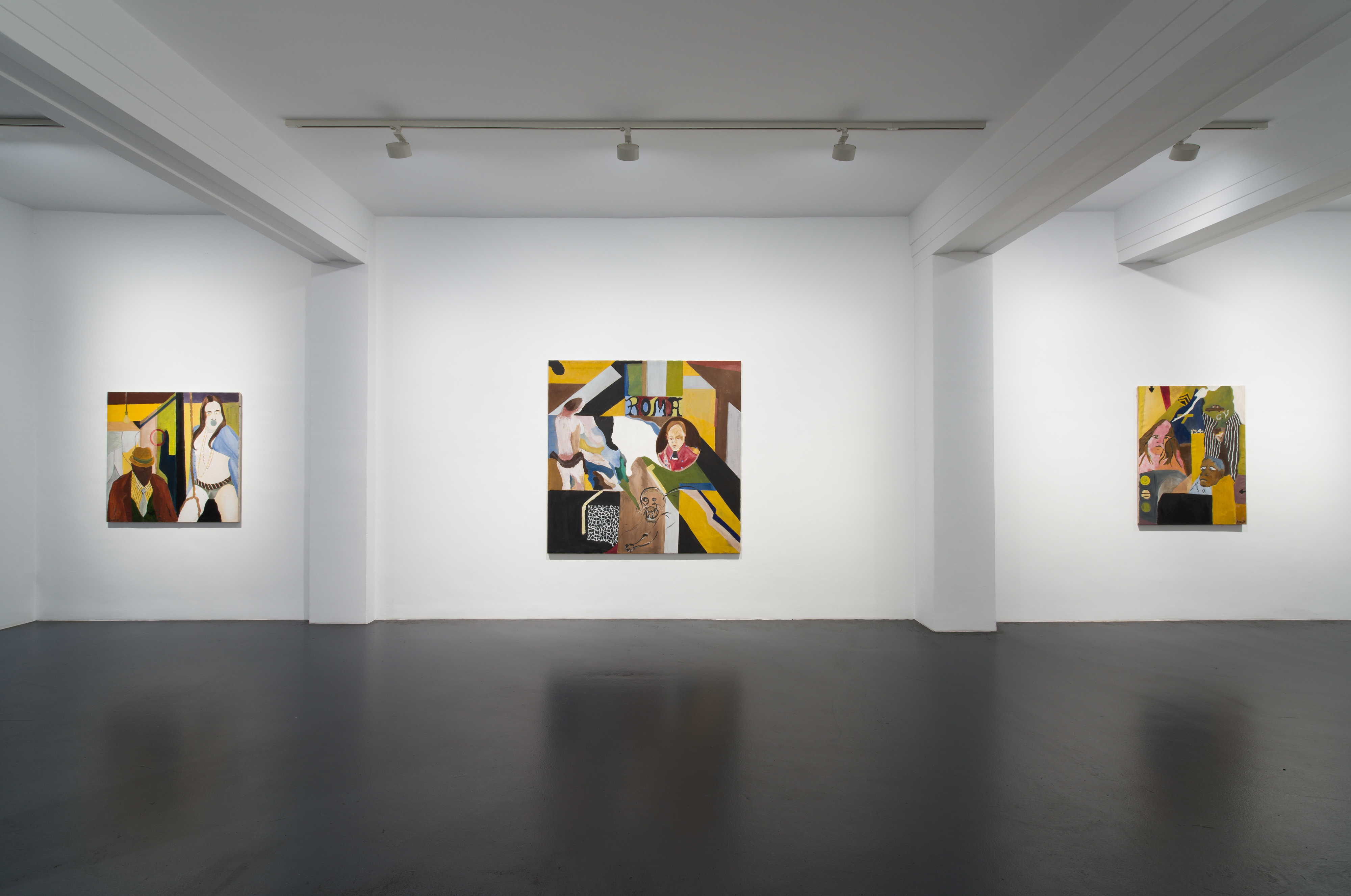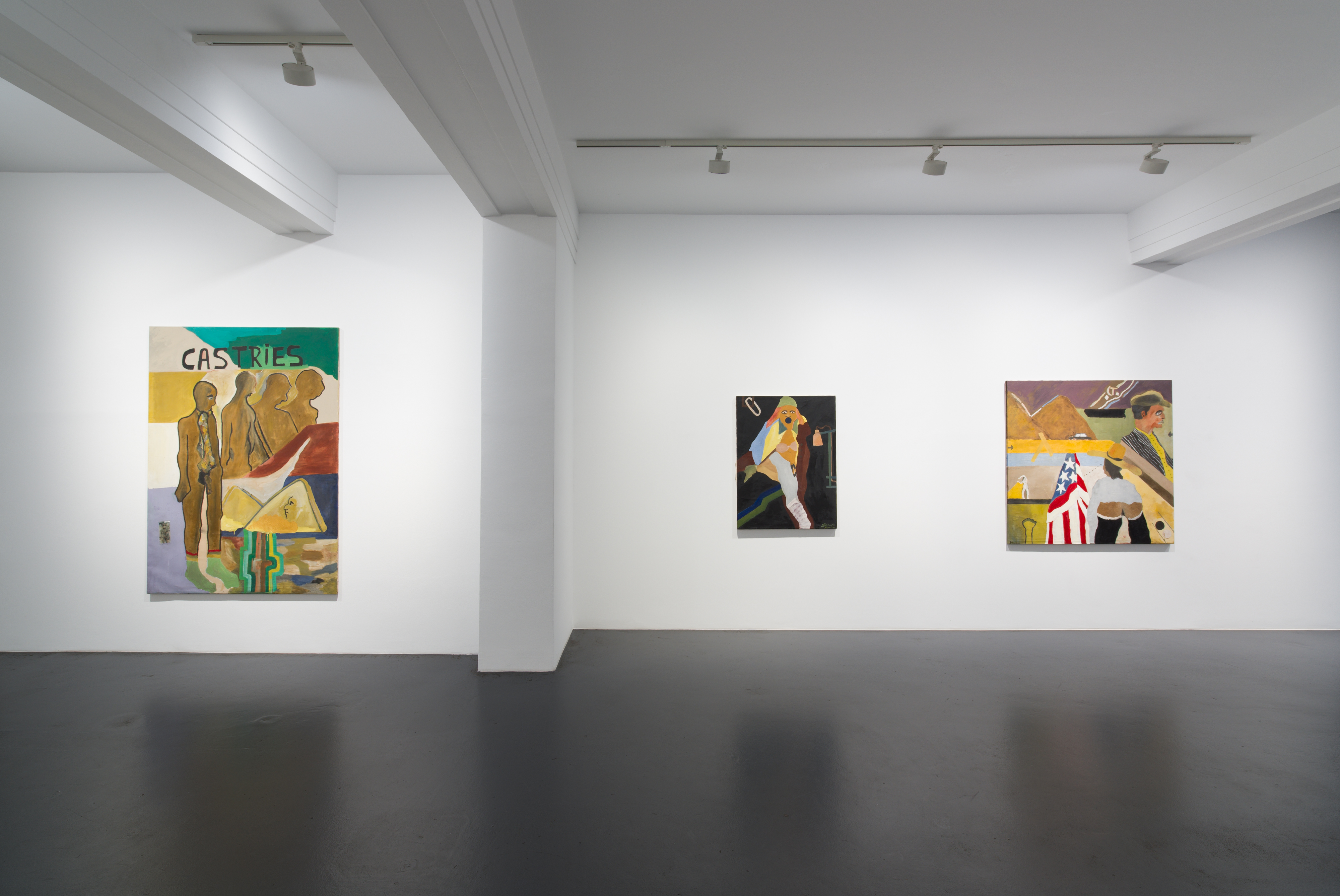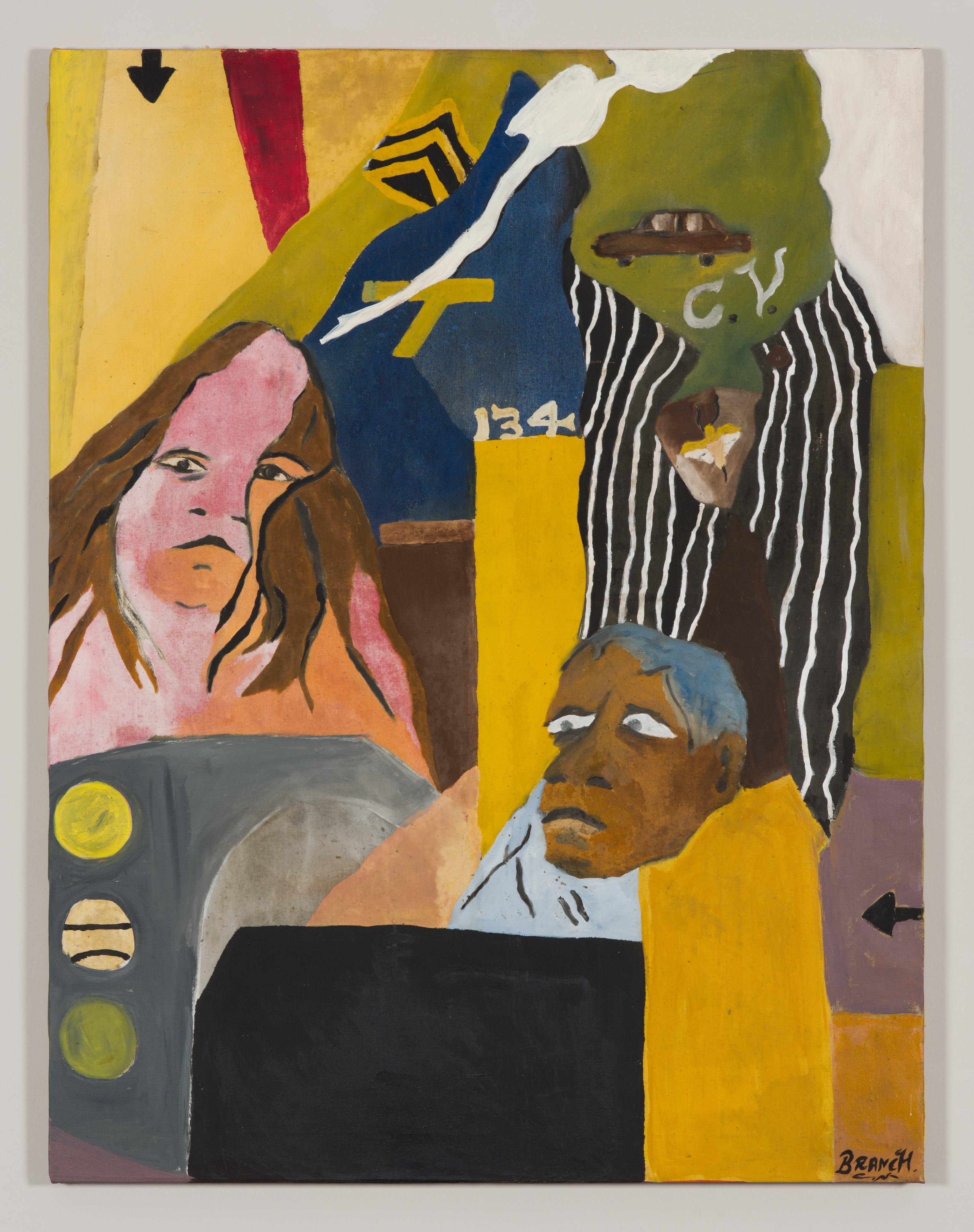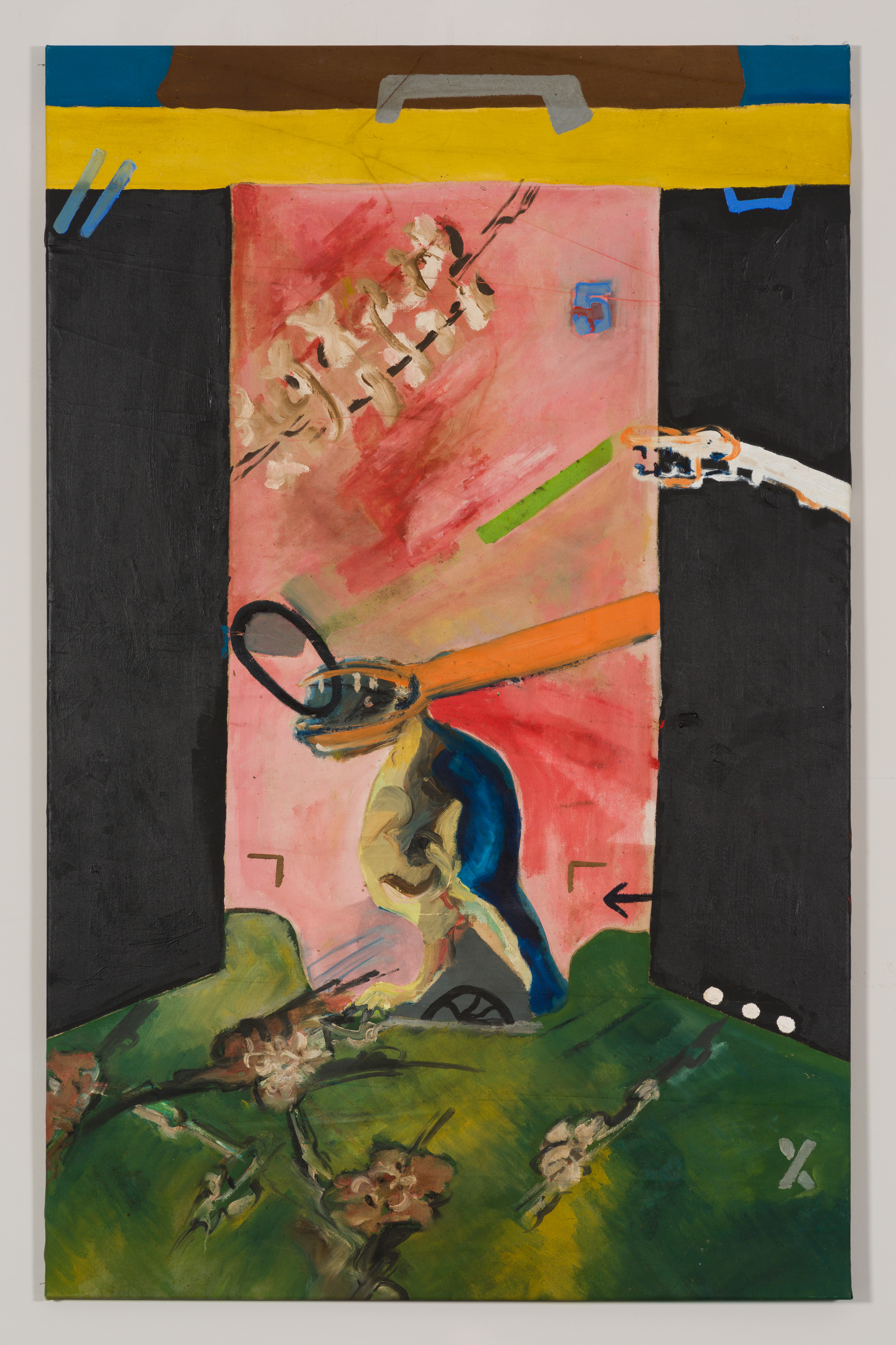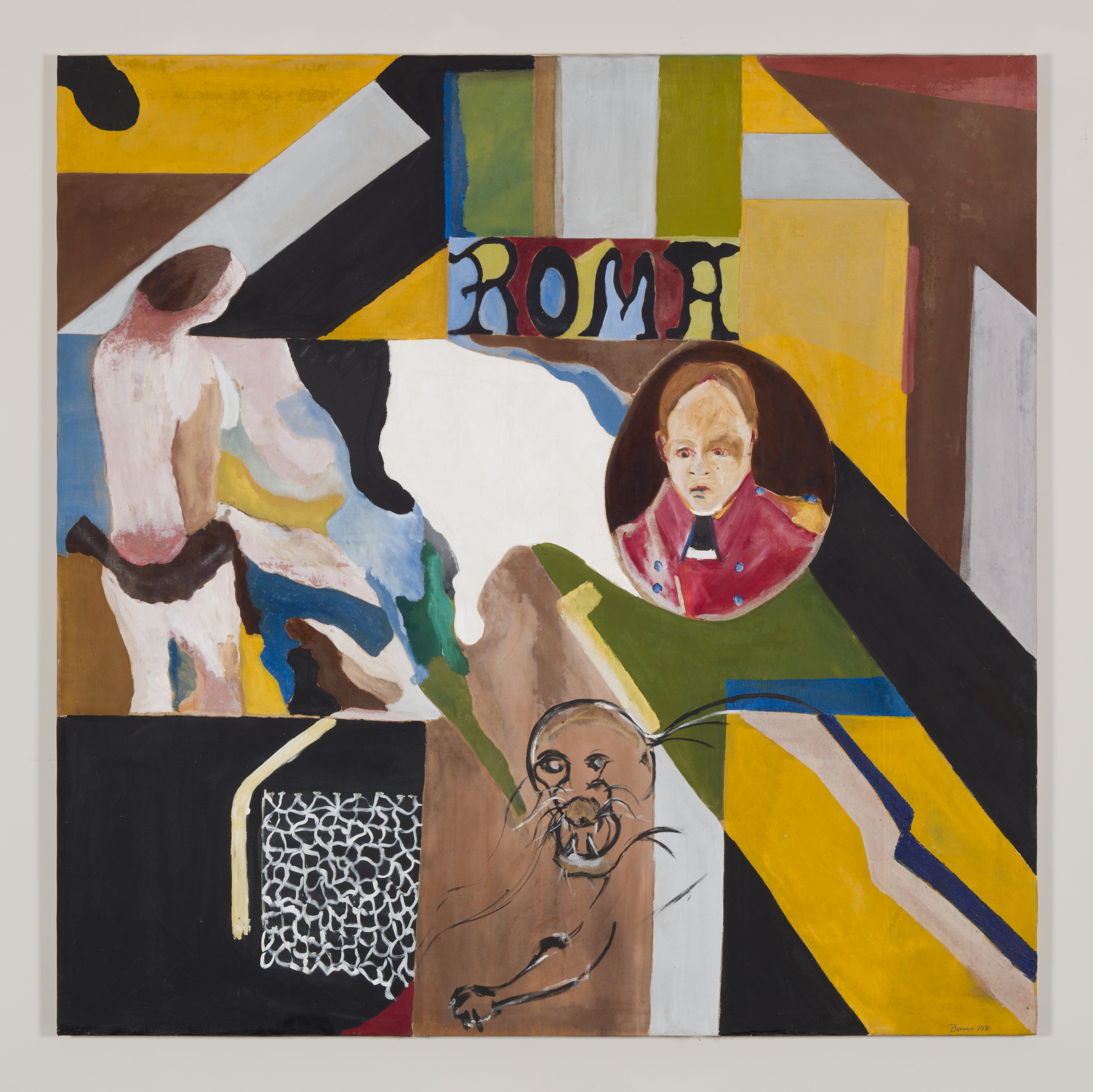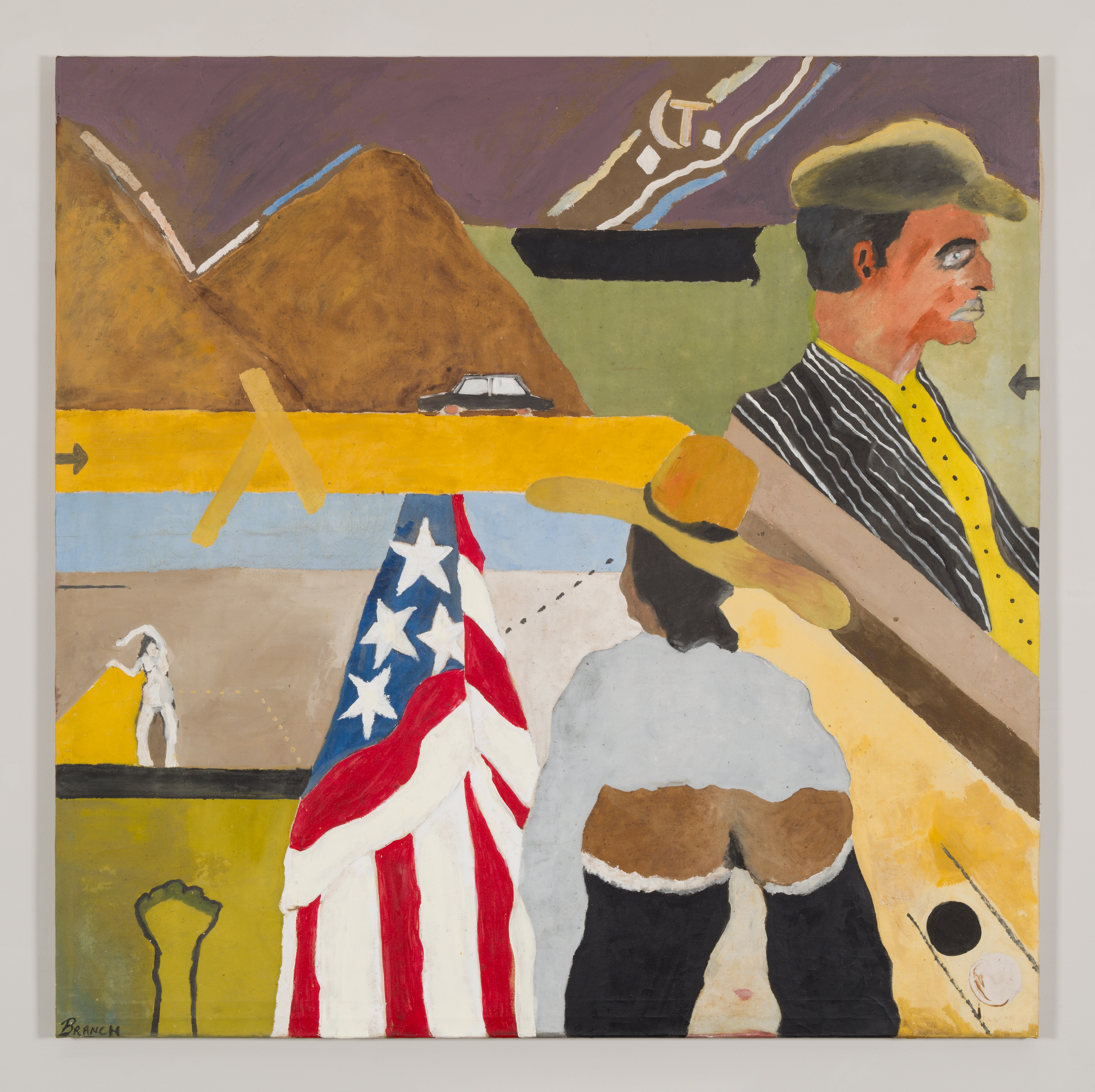Winston Branch OBE (b. Castries, St Lucia, 1947) has pursued a ‘heraclitan’ existence, a movement and sense of life as flux in the continuum of unfolding change.[1] As a consequence there can be no surprise that the ‘river’ and ‘journey’ appear repeatedly as titles in the series of paintings (1968-76), and it is a focus on this early period of paintings that are the subject of the current exhibition. His precociousness (he left native St Lucia for London aged twelve) towards painting has from the outset been a persistent artistic quest and committed life pursuit.[2] It began with painting education at the Slade School of Fine Art (UCL, London) in the second half of the 1960s. As a famed ‘painters’ institution and over a long period as a tutor (1973-92) there remains affectionate affinity.[3] Branch’s highly gifted visual abilities quickly became self-evident following the completion of his Slade studies when he was awarded a prestigious Prix de Rome residency (1971/72) at the British School. While living in Rome the artist assimilated immediate access to in situ masters of the Renaissance and Baroque. For it is within the immediate experience of travel and his inflected narrative life experiences that the allusive contents of the early paintings began. For example Spanish Nights (1971), executed immediately following his return from Rome is a necessary example. The painting is a compendium of abstract spatial fragments with collaged figurative elements inserted or superimposed. The word ROMA is prominent, not merely that it is denotative of the city, but because it amused the artist since it reads as AMOR when spelt backwards. We find an allusive sensory scene, a stylish oval military type portrait, with a sketched outlined semi-beast like figure, all in turn indicative of a memorial palimpsest reimagined. As a young artist Branch was quite the stylish dresser and we should not forget that the works date to the period of ‘Swinging London’ in 1960s and early hippy culture of the 70s. We see an inflected current of the time in the painting Tomorrow will be better than today (1975), with its hatted figure surveying a deflated American flag at the end of the Vietnam war, a dancing stripper and a clenched fist of the Black Power movement touching on the immediacy of period it was painted.[4] However, we should not consider the painting as a political statement, but rather a lexical mirroring of the prevailing contemporary consciousness.
There are two cultural strands embedded in the initial development of the artist, a residual Caribbean colonial culture whence his family emerged, and influences generated by post-war American painting. To this can be added a direct knowledge of post-war British paining and Pop Art scene in London. The artist argues that the painter Clifford Still has had a lasting influence through space and paint application and a general use of surface facture. Later his awareness of American painting intensified particularly after his Fisk University residency and exhibition at Nashville, Tennessee in 1973.[5] The work Sweet Bird of Youth (1974), executed after his return to London is and exemplary case in point, it is a melange image of field and figure.[6] However, the artist moved away from figuration following his residency in Berlin (1976), at which time he replaced oil on canvas with acrylic where he developed his layered wet in wet lyrical field abstraction. The later use of expressive facture became his primary concern (after 1976) when he moved away from figurative narration. This said the significant first impulses in London stemmed from post-war British Art, since works like In Search of a Way Home and Across the River (1969) follow an open chain of early quotidian impulses. The first is a a group of homeless street youths he saw at Hamburg Railway station, images he equates with the street urchins of Velasquez and Murillo, and the latter with works by Hockney such as his famous ‘Two Men in a Shower’ racially recast. The personal temporal aspect of Across the River is made clear not only but the textual use of ‘Castries’ the town of Branch’s birth, but by the collaged photograph of a Bianfran child connoting the Nigerian Civil War (1967-70) which ran in parallel to the artist’s Slade studies. The paintings All the Rivers Flow to the Sea and Meeting by the River date from the same year, but where the doubled figures are cast in specific ethnic contrast. In Meeting by the River the artist no only refers to his applied use of Clifford Still abstract space, but where the black figure becomes a would be shadow of the white male. The photograph is racially ambiguous, while the still life refers to Matisse another artist who stressed flatness as form of spatial construction.
The work Sweet Bird of Youth is one of a number of paintings executed after the return from America at the end of 1973. The protagonist subject of the Williams play was a gigolo, whereas paintings like Madame George (1973) and A Rising Sun and Tomorrow doesn’t come (1974) are seemingly in Picasso’s ‘Demoiselle’ or bordello painting tradition. That is to say they represent at the very least a sub-culture of effulgence and sexual ambiguity. The image of Madame George was taken from a contemporary stream of consciousness pop song by the famous folk musician Van Morrison and supposedly referenced a drag queen of the same name. Yet in Madame George it is hard to resist the idea of the pimp and a the prostitute, the anonymous half-torso black figure in his familiar West Indian garb, and the inviting woman frontally presented with an open oral mouth of a sex doll.[7] Whereas in the more explicit A Rising Sun and Tomorrow doesn’t come the crotch is made deliberately self-evident, the latter with a butterfly vulva that points to the presumed site of delight and libidinal metamorphosis.[8] In both paintings we confront a jumble of juxtaposed collaged fragments leaving the painting open to numerous interpretations, a decollated male head, a female bust, and abstruse logo like referents to popular culture. Transgression and seduction appear to be uppermost at this time even when the subject matter seems benign. In the repoussoir Bird (1974) that he calls his ‘Baconian’ painting, the work is close to another work Ju Ju Bird No 2 in the same year.[9] Yet there is an extended transgressive metaphor at play in Bird where the head of the imagined raptor is like a Venus flytrap with an oblique reference to the vagina dentata. It does not inhibit the ‘fantastical-magical’ of its Caribbean origins where an array of myths and fantasies are common to popular culture. The Berlin (1976) DAAD residency was significant moment in the artists’ life, for from it a new abstract non-narrative painting emerged as both means and medium In the last half-century Winston Branch has travelled and exhibited across most continents of the world. The journeys are the inspiring ‘unfolding’ river of his life, where he acknowledges “all is flux nothing stands still”. (Heraclitus of Ephesus).
©Mark Gisbourne
Sunday, 17 August 2025
[1] The artist became an Officer of the Order of the British Empire, in the Birthday Honours of 2024.
[2] The artist was in fact first sent to study with the Jesuits in England and resided with family cousins.
[3] He attended the Slade) at the suggestion of British painter Robert Medley (1905-94). In fact the painting ‘Yellow Sky’ (1970)
completed near the end of his studies is now part of the UCL collection.
[4] The Vietnam War ended on the 30th April 1975, US combat troops were withdrawn in 1973, see Pierre Asselin, Vietnam’s
American War: A New History, Cambridge, Cambridge University Press 2024.
[5] Fisk is a black Liberal Arts College, founded in 1866, Nashville, Tennessee.
[6] The title is taken from Tennessee Williams play (1959) and film (Paul Newman, Geraldine Page, 1962), see Tennessee Williams, Sweet Bird of Youth and Other Plays, London, Penguin, 2009.
[7] In the 1960s porn magazines advertised inexpensive plastic blow up sex dolls, which replaced the rubber versions of earlier generations. See Anthony Ferguson The Sex Doll: A History, Jefferson, NC, 2010
[8] The Rising Sun may refer to the Animals famous sing ‘The House of the Rising Sun’ (1964) which refers to a brothel in New Orleans ‘its been the ruin of many a poor boy…”
[9] In fact a ‘Ju Ju bird’ was a silkscreen print by the artist (1976), acquired by the Victoria and Albert Museum. A folkloric magical
bird that is common to Caribbean culture, notably Jamaica. See Andrea Shaw Nevins, Working Juju: Representations of the
Caribbean Fantastic, Athens, University of Georgia Press, 2019.



